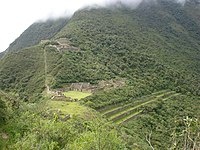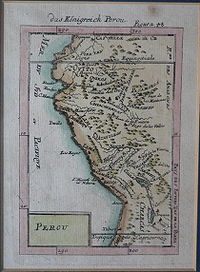-
Use Cases
-
Resources
-
Pricing
Inca Empire Timeline
(Early 13th century - 1572)The Inca Empire, also known as the Inka Empire, was the largest empire in pre-Columbian America. It existed from the early 13th century until 1572 and was centered in the Andean region of South America. The Inca civilization was highly advanced in terms of architecture, agriculture, and governance. More Less
Founding and Early Expansion
Pachacuti becomes the ninth Sapa Inca, marking the beginning of Inca expansion
1438
% complete
Pachacuti Inca Yupanqui expands Inca control over the Cusco region
1438
% complete
Rulers and Leadership
Inti Raymi (Festival of the Sun) becomes a major religious celebration in Cusco
1438
% complete
Inti Raymi, also known as the Festival of the Sun, was a major religious celebration in the Inca Empire. It took place annually in Cusco, the capital city of the empire, during the winter solstice. The event lasted for nine days and included various rituals and ceremonies to honor the sun god Inti. The festival involved processions, dances, sacrifices, and offerings of food and drink. It was a time of great importance and significance for the Inca people, as it marked the beginning of the new agricultural cycle and symbolized the renewal of life and the divine power of the sun.
Image source: Inca mythology
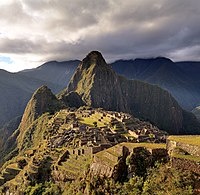
Inca mummification practices reach their peak
1438
% complete
Inca laws and administration system (Tawantinsuyu) are established
1438
% complete
The Inca Empire, also known as Tawantinsuyu, is established in the Andean region of South America. The empire is governed by a centralized administration system with laws and regulations that regulate all aspects of life including agriculture, trade, and social classes.
Image source: Inca Empire

Succession crisis between Huáscar and Atahualpa follows Huayna Capac's death
1527
% complete
The Succession crisis between Huáscar and Atahualpa follows Huayna Capac's death in 1527. After the death of Huayna Capac, his two sons, Huáscar and Atahualpa, fought for control of the Inca Empire. This led to a civil war that lasted for several years, with both sides gathering support from different regions and factions within the empire. Eventually, Atahualpa emerged victorious and became the new ruler of the Inca Empire.
Huayna Capac dies from smallpox, leading to a succession crisis and civil war
1527
% complete
Infrastructure and Architecture
Inca engineers develop advanced agricultural terracing techniques
1438
% complete
Inca ruler orders construction of Temple of the Sun
1438
% complete
Inca ruler Pachacuti orders the construction of the Temple of the Sun in Cusco. The temple is dedicated to the sun god Inti and is considered one of the most important religious and ceremonial sites in the Inca Empire. Construction of the temple takes several decades and involves the work of thousands of laborers and artisans. The temple is adorned with gold and precious stones, and is known for its exquisite architecture and engineering.
Construction of Machu Picchu begins
1440
% complete
Construction of Machu Picchu begins in the year 1440. Machu Picchu is an Incan citadel located in the Andes Mountains of Peru. It was built as a royal estate for the Inca emperor Pachacuti and served as a center for worship, administration, and agriculture. The construction of Machu Picchu involved intricate stonework, terraced agriculture, and a sophisticated water management system. The site was abandoned and forgotten for centuries but was rediscovered by American explorer Hiram Bingham in 1911. It is now a popular tourist destination and a UNESCO World Heritage site.
Image source: Inca Trail to Machu Picchu
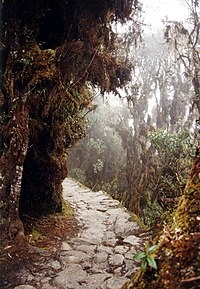
Construction of Sacsayhuamán fortress begins
1440
% complete
Construction of Sacsayhuamán fortress begins in 1440. Sacsayhuamán is an Inca fortress located in the city of Cusco, Peru. It was built as a military stronghold and is known for its massive stone walls and impressive architecture.
Construction of Ollantaytambo fortress begins
1440
% complete
Construction of Pisac fortress begins
1440
% complete
Construction of Choquequirao begins
1440
% complete
Inca road network (Qhapaq Ñan) expands, connecting distant regions of the empire
1460
% complete
Conquests and Expansion
Topa Inca Yupanqui leads successful military campaigns in Ecuador and Chile
1471
% complete
Inca Empire reaches its greatest territorial extent under Huayna Capac
1493
% complete
The Inca Empire reaches its greatest territorial extent under Huayna Capac (1493). At its peak, the empire spans from modern-day Ecuador all the way down to central Chile and Argentina.
Inca armies led by Huáscar and Atahualpa clash in a civil war
1527
% complete
Spanish Conquest and Fall
Spanish conquistador Francisco Pizarro arrives in Peru
1532
% complete
Spanish conquistador Francisco Pizarro arrives in Peru to conquer the Inca Empire in 1532.
Image source: Francisco Pizarro

Battle of Cajamarca: Pizarro captures and executes Inca emperor Atahualpa
Nov 16, 1532
% complete
Battle of Cajamarca: Pizarro captures and executes Inca emperor Atahualpa (Nov 16, 1532)
Image source: Atahualpa
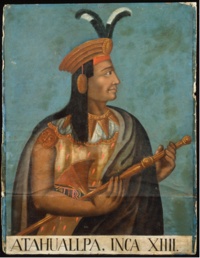
Spanish conquistadors execute the Inca emperor Atahualpa in Cajamarca
Nov 16, 1532
% complete
Spanish forces capture Cusco, the capital of the Inca Empire
Nov 15, 1533
% complete
Spanish forces led by Francisco Pizarro capture Cusco, the capital city of the Inca Empire, marking a major turning point in the conquest of the Inca Empire.
Inca army led by Rumiñahui launches guerrilla warfare against the Spanish
1534
% complete
Inca army led by Rumiñahui launches guerrilla warfare against the Spanish (1534)
Spanish conquistadors establish the city of Lima
Jan 18, 1535
% complete
Spanish conquistadors led by Francisco Pizarro establish the city of Lima on January 18, 1535.
Image source: Lima

Manco Inca Yupanqui leads a rebellion against the Spanish occupation
1536
% complete
Manco Inca Yupanqui leads a rebellion against the Spanish occupation (1536).
Manco Inca Yupanqui establishes the Neo-Inca State in Vilcabamba
1537
% complete
Manco Inca Yupanqui establishes the Neo-Inca State in Vilcabamba (1537).
Execution of the last Sapa Inca, Túpac Amaru
Sep 24, 1572
% complete
Túpac Amaru was a leader of an uprising against Spanish rule in the Inca Empire. He was captured and executed on September 24, 1572, marking the end of the Inca resistance against Spanish colonization.
Image source: Túpac Amaru
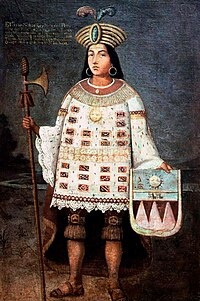
Spanish forces execute Túpac Amaru, the last Inca emperor, in Cusco
Sep 24, 1572
% complete
Spanish forces execute Túpac Amaru, the last Inca emperor, in Cusco (Sep 24, 1572).
Image source: Spanish conquest of the Inca Empire
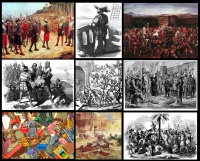
Spanish forces capture and execute Túpac Amaru, the last Sapa Inca
Sep 24, 1572
% complete
On September 24, 1572, Spanish forces capture and execute Túpac Amaru, the last Sapa Inca. This event marked the end of the Inca Empire and the beginning of Spanish colonial rule in the region.
Image source: Túpac Amaru II
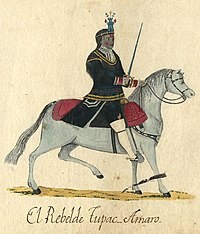
Spanish capture and execute Manco Inca, ending Neo-Inca State
Apr 24, 1573
% complete
Key Facts
- The Inca Empire was founded by Manco Capac in the early 13th century.
- The capital city of the Inca Empire was Cuzco, located in present-day Peru.
- The Inca people built an extensive road network called the Qhapaq Ñan.
- The Inca Empire is known for its impressive stone structures, including Machu Picchu.
- The Spanish conquistadors, led by Francisco Pizarro, conquered the Inca Empire in 1572.
Source
This Inca Empire timeline was generated with the help of AI using information found on the internet.
We strive to make these timelines as accurate as possible, but occasionally inaccurates slip in. If you notice anything amiss, let us know at [email protected] and we'll correct it for future visitors.
Create a timeline like this one for free
Preceden lets you create stunning timelines using AI or manually.
Customize your timeline with one of our low-cost paid plans
Export your timeline, add your own events, edit or remove AI-generated events, and much more
Free
$
0
free forever
No credit card required.
Basic
$
10
/month
billed annually
Cancel anytime.
Pro
$
16
/month
billed annually
Cancel anytime.
Common Questions
Can I cancel anytime?
Yes. You can cancel your subscription from your account page at anytime which will ensure you are not charged again. If you cancel you can still access your subscription for the full time period you paid for.
Will you send an annual renewal reminder?
Yes, we will email you a reminder prior to the annual renewal and will also email you a receipt.
Do you offer refunds?
Yes. You can email us within 15 days of any payment and we will issue you a full refund.
What if I have more questions?
Check out our pricing docs or send us an email anytime: [email protected].




